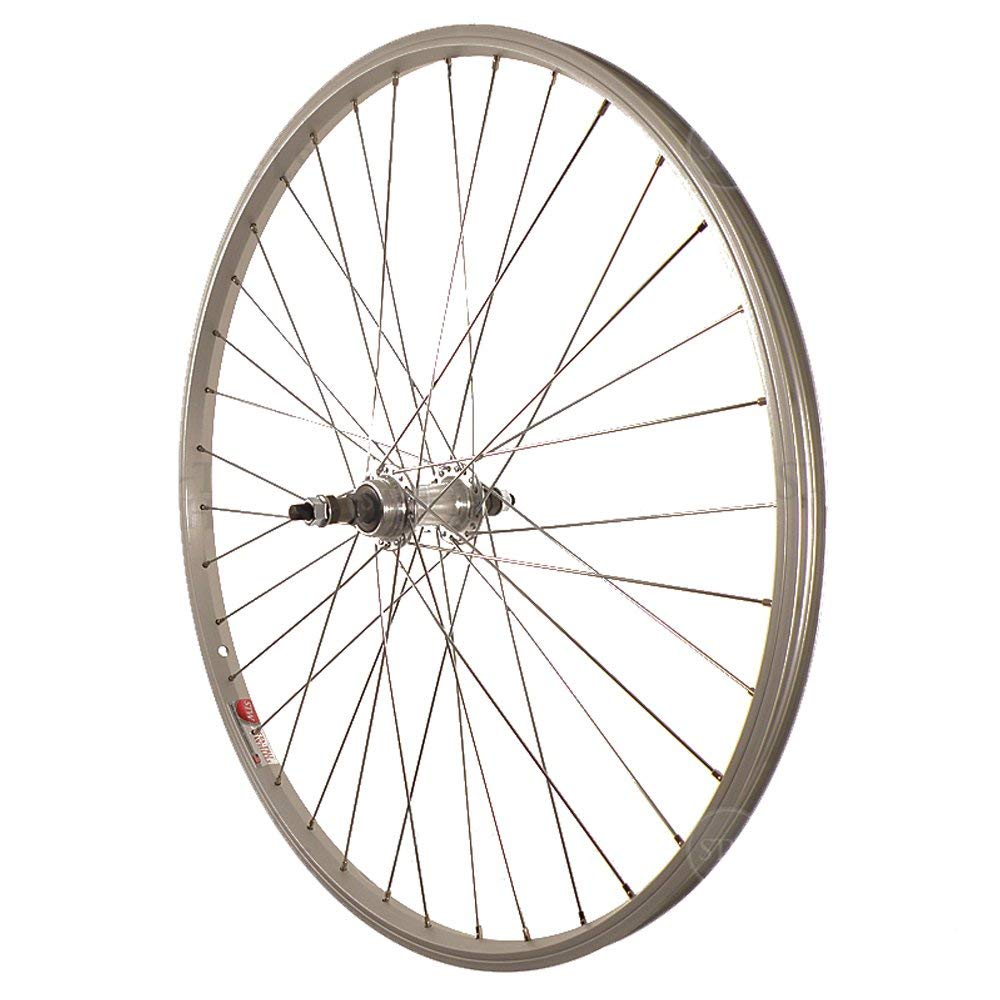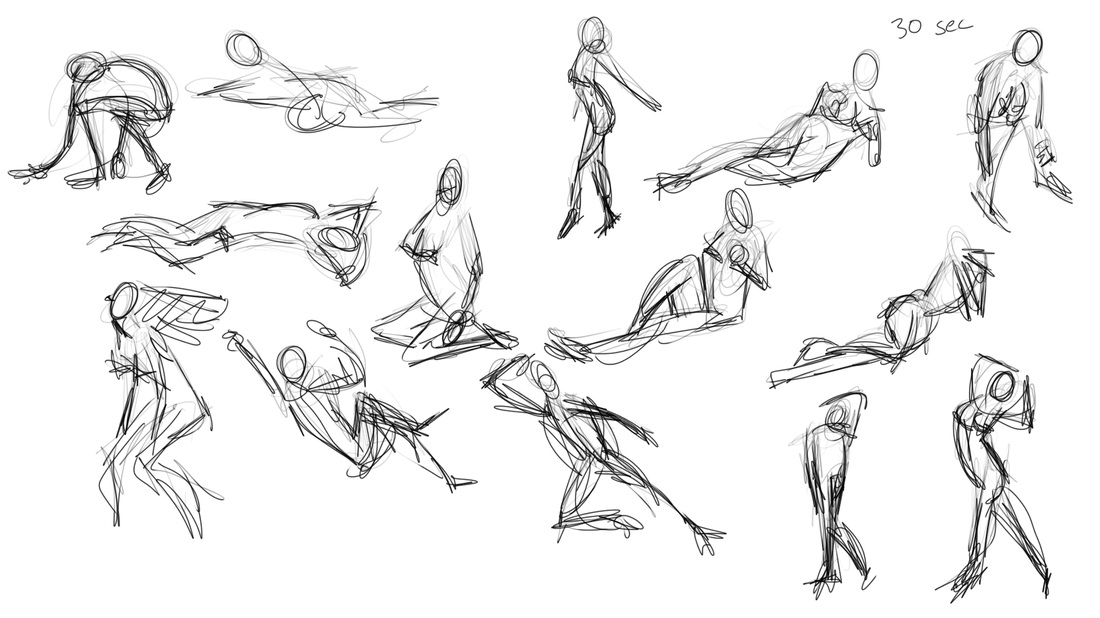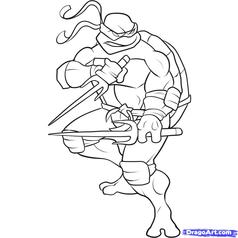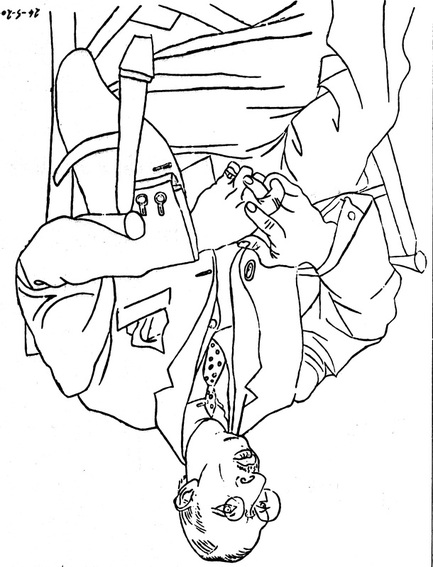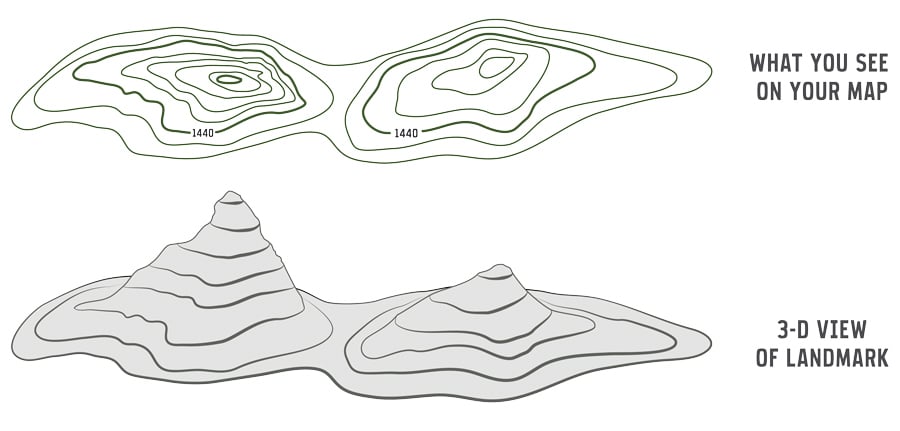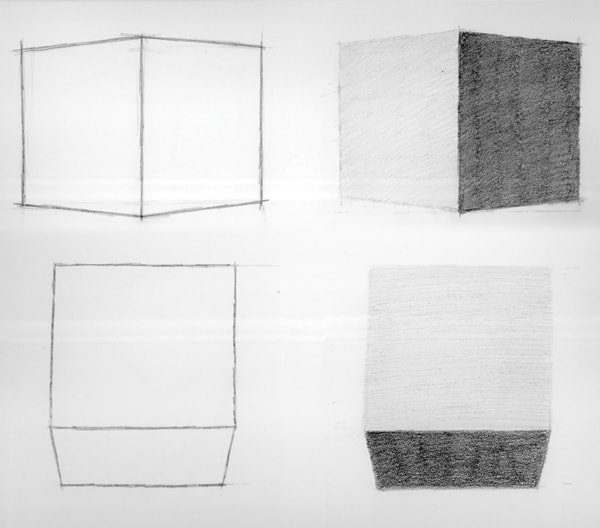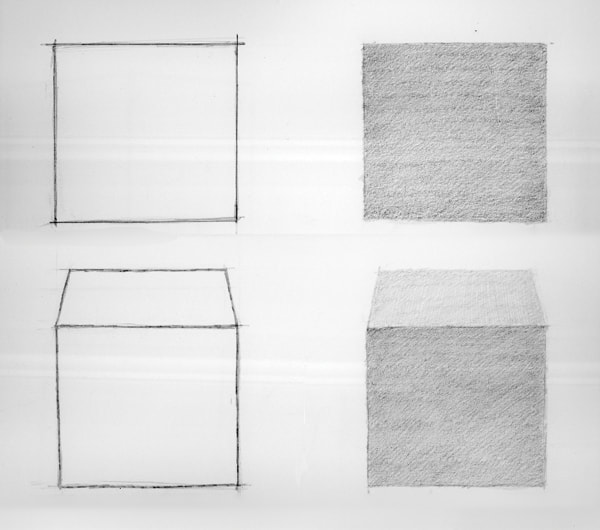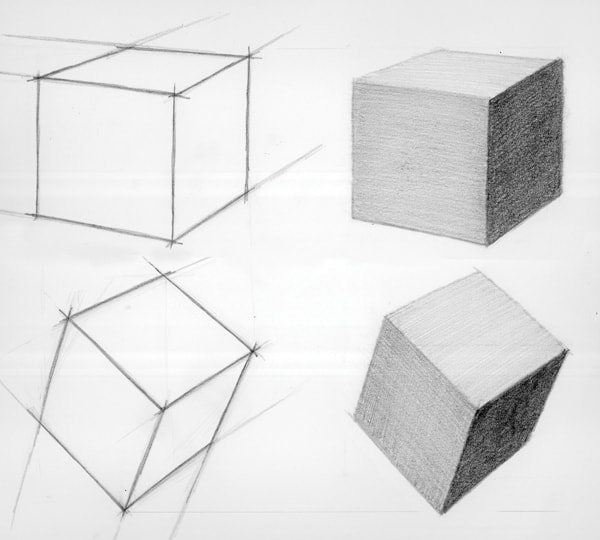LESSON ONE - Learning to see
LESSON TWO: GESTURE DRAWING
A gesture drawing is a laying in of the action, form, and pose of a model/figure. Typical situations involve an artist drawing a series of poses taken by a model in a short amount of time, often as little as 10 seconds, or as long as 5 minutes.
LESSON THREE: It is just a bunch of lines
LESSON FOUR: Be the LINE!
Take a line for a walk.... your pen or pencil is doing the ‘walking’ to describe what your eyes are seeing...and don’t lift up your pencil until you reach the ‘end’ of your walk. You can look at your paper from time to time, but mostly look at what you are drawing. Just sneak a peek! Try not to draw while you are looking at your paper. There will be lines drawn that don't ‘exist’ they just get you from one spot to another, thats ok.
You may choose anything to practice this kind of drawing with...it can be a corner of a room, the inside of your cupboard, a patch of garden that catches your eye.... Sit outside the doorway of a room...draw what you see. In a coffee shop? Draw the tables and chairs, draw the view out the window.
Or, set up a little still life and let your pen travel along all the details of the objects. Let the line describe the shapes, the patterns, the tones you see. Take your time- this study could go on for a long time depending on the subject mater you have chosen. These students were presented with an arrangement of toy turtles on a piece of driftwood - drawings were done with one continuous line, sneak a peek.
Again, it doesn’t matter what you draw...just that you DO draw.
You may choose anything to practice this kind of drawing with...it can be a corner of a room, the inside of your cupboard, a patch of garden that catches your eye.... Sit outside the doorway of a room...draw what you see. In a coffee shop? Draw the tables and chairs, draw the view out the window.
Or, set up a little still life and let your pen travel along all the details of the objects. Let the line describe the shapes, the patterns, the tones you see. Take your time- this study could go on for a long time depending on the subject mater you have chosen. These students were presented with an arrangement of toy turtles on a piece of driftwood - drawings were done with one continuous line, sneak a peek.
Again, it doesn’t matter what you draw...just that you DO draw.
LESSON FIVE: SEEING THE BEYOND
Cross-contour lines help you to understand the solid form of an object that you're drawing.
Often cross-contours look like the contour lines on a map of rough terrain - they help us visualize the topography of a surface. Usually, we don't draw them this mechanically, but use the understanding of cross-contours to help us describe the form with more subtle line or shading. You can actually make visually striking drawings with just those contour-lines (and no shading) but their real benefit, in my opinion, is helping you to understand how objects appear from certain vantage points. They help us understand the three-dimensional form and describe it on a two-dimensional surface. Contours wrap around a form and obey linear perspective.
Cross-contour drawing exercises are great for helping strengthen your observational muscles, and when you start shading your mark-making will be that much more believable as a result.
Often cross-contours look like the contour lines on a map of rough terrain - they help us visualize the topography of a surface. Usually, we don't draw them this mechanically, but use the understanding of cross-contours to help us describe the form with more subtle line or shading. You can actually make visually striking drawings with just those contour-lines (and no shading) but their real benefit, in my opinion, is helping you to understand how objects appear from certain vantage points. They help us understand the three-dimensional form and describe it on a two-dimensional surface. Contours wrap around a form and obey linear perspective.
Cross-contour drawing exercises are great for helping strengthen your observational muscles, and when you start shading your mark-making will be that much more believable as a result.
|
|
|
PLANAR
Definition: A planar analysis drawing simplifies complex curved surfaces into flat planes, using straight lines. This process helps students to think about the underlying structure of objects and results in an analytical drawing, that is rather mechanical in appearance.
